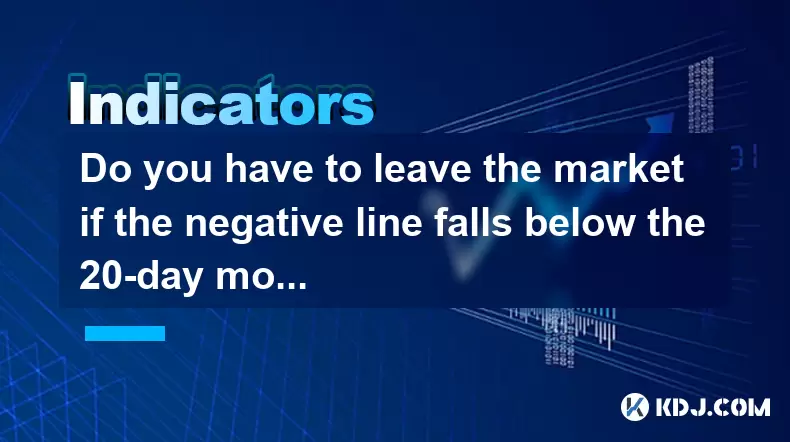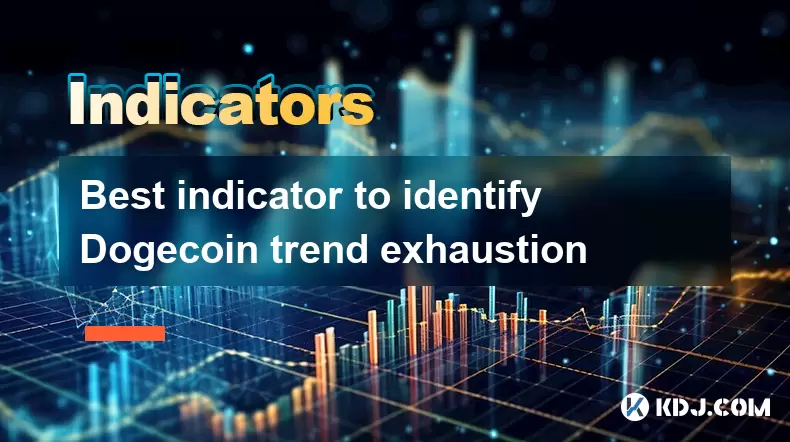-
 Bitcoin
Bitcoin $108,960.1513
0.84% -
 Ethereum
Ethereum $2,578.1548
2.56% -
 Tether USDt
Tether USDt $1.0001
-0.02% -
 XRP
XRP $2.2702
1.71% -
 BNB
BNB $662.6676
1.28% -
 Solana
Solana $152.6556
3.53% -
 USDC
USDC $0.9999
0.00% -
 TRON
TRON $0.2865
0.80% -
 Dogecoin
Dogecoin $0.1726
5.60% -
 Cardano
Cardano $0.5883
2.60% -
 Hyperliquid
Hyperliquid $39.9405
3.10% -
 Sui
Sui $2.9147
1.24% -
 Bitcoin Cash
Bitcoin Cash $493.8494
2.04% -
 Chainlink
Chainlink $13.6129
3.68% -
 UNUS SED LEO
UNUS SED LEO $9.0589
0.46% -
 Avalanche
Avalanche $18.2965
2.82% -
 Stellar
Stellar $0.2493
4.35% -
 Shiba Inu
Shiba Inu $0.0...01178
2.25% -
 Toncoin
Toncoin $2.8078
-6.81% -
 Hedera
Hedera $0.1604
4.96% -
 Litecoin
Litecoin $87.8270
1.20% -
 Monero
Monero $320.4173
1.87% -
 Polkadot
Polkadot $3.4079
1.81% -
 Dai
Dai $1.0000
0.00% -
 Ethena USDe
Ethena USDe $1.0000
-0.01% -
 Bitget Token
Bitget Token $4.4122
0.50% -
 Uniswap
Uniswap $7.3890
1.84% -
 Aave
Aave $286.0205
5.66% -
 Pepe
Pepe $0.0...01012
4.35% -
 Pi
Pi $0.4643
3.14%
Do you have to leave the market if the negative line falls below the 20-day moving average with large volume?
A drop below the 20-day MA with high volume in crypto may signal bearish momentum, but combining it with other indicators like RSI or MACD improves accuracy.
Jul 07, 2025 at 02:50 am

Understanding the 20-Day Moving Average in Cryptocurrency Trading
The 20-day moving average (MA) is a commonly used technical indicator in cryptocurrency trading that helps traders assess the short-term trend of an asset. It calculates the average closing price of a digital asset over the past 20 days and plots it on a chart to smooth out price volatility. When the price falls below this line, especially with significant volume, it may signal a potential shift in momentum.
In the context of cryptocurrencies like Bitcoin or Ethereum, where market sentiment can change rapidly due to news events or macroeconomic factors, understanding how this signal behaves becomes crucial. The 20-day MA acts as a dynamic support or resistance level depending on whether the price is above or below it.
The Role of Volume in Confirming Price Movements
Volume plays a critical role in validating any technical signal. A drop below the 20-day MA accompanied by large volume suggests strong selling pressure and increased trader participation in the downward move. This combination can be interpreted as a bearish confirmation.
Traders often use tools such as volume-weighted moving averages or On-Balance Volume (OBV) to cross-check if the movement under the 20-day MA is genuine or just noise. High volume during such a break typically indicates that institutional players or large holders are actively selling, which increases the likelihood of a sustained downtrend.
Historical Behavior of Cryptocurrencies During Such Events
Looking at historical data from previous market cycles, we can observe patterns when major cryptocurrencies have fallen below their 20-day MA with heavy volume. For instance, during the March 2020 crash, Bitcoin experienced several instances where it broke below its 20-day MA with high volume, followed by deeper corrections before stabilizing.
However, not every such event leads to a full-blown bear market. In some cases, after breaking below the 20-day MA, prices rebound quickly, especially if the drop was caused by temporary panic rather than fundamental weakness. Therefore, it’s essential to combine this signal with other indicators such as RSI, MACD, or Fibonacci retracement levels for better accuracy.
How to Respond If You're Already Holding the Asset
If you're holding a cryptocurrency that has recently dropped below its 20-day MA with high volume, there are several actions you can consider:
- Reassess your entry point: If you entered the trade near resistance or without a clear plan, re-evaluating your position makes sense.
- Check for additional signals: Use candlestick patterns or divergence indicators to determine if the drop is likely to continue or reverse.
- Adjust stop-loss levels: Consider tightening your stop-loss order to protect against further downside while allowing room for normal market fluctuations.
- Consider partial profit-taking: Selling a portion of your holdings allows you to lock in gains while still maintaining exposure in case of a recovery.
- Review fundamentals: Ensure that the underlying project or network hasn’t undergone any adverse changes that might justify the sell-off.
Each decision should align with your personal risk tolerance and investment strategy. Blindly exiting based solely on this signal can lead to missed opportunities if the market reverses quickly.
Alternative Strategies Instead of Immediate Exit
Instead of immediately leaving the market upon seeing a negative crossover below the 20-day MA with high volume, traders can explore alternative strategies:
- Hedging positions: Use derivatives like futures or options to offset potential losses without fully exiting the market.
- Swing trading adjustments: Reduce exposure temporarily but keep a small position active to participate in possible rebounds.
- Dollar-cost averaging: Continue investing fixed amounts regularly to reduce the impact of short-term volatility.
- Sector rotation: Shift funds from more volatile assets to stablecoins or less risky altcoins instead of completely exiting crypto.
- Portfolio rebalancing: Adjust allocation ratios between different crypto assets to maintain a balanced risk profile.
These approaches allow investors to stay engaged with the market while managing risk effectively.
Frequently Asked Questions
Q: Can I rely solely on the 20-day MA and volume to make trading decisions?
A: While the 20-day MA combined with volume provides useful insights, relying solely on it can result in false signals. Always incorporate additional indicators like RSI or MACD for confirmation.
Q: What does "large volume" mean in the context of crypto trading?
A: Large volume refers to a sudden spike in trading activity significantly above the average daily volume. It often indicates heightened interest or urgency among traders, either buying or selling aggressively.
Q: How long should I wait before deciding if the breakout below the 20-day MA is valid?
A: Traders usually wait for at least two consecutive candlesticks to close below the 20-day MA with elevated volume before confirming the signal. This helps filter out false breaks caused by short-term volatility.
Q: Is it possible for a cryptocurrency to recover quickly after falling below the 20-day MA?
A: Yes, many times the market experiences sharp drops followed by rapid recoveries. These scenarios often occur during flash crashes or emotional sell-offs, especially in low-liquidity markets.
Disclaimer:info@kdj.com
The information provided is not trading advice. kdj.com does not assume any responsibility for any investments made based on the information provided in this article. Cryptocurrencies are highly volatile and it is highly recommended that you invest with caution after thorough research!
If you believe that the content used on this website infringes your copyright, please contact us immediately (info@kdj.com) and we will delete it promptly.
- Babylon, Bitcoin, and the EVM Mainnet: A New Era for BTCFi?
- 2025-07-07 16:30:11
- Queen Elizabeth Coin Sells for £31,000: A Royal Fortune in Your Pocket?
- 2025-07-07 16:30:11
- Altcoin Season on the Horizon? Michael van de Poppe Eyes a Potential 76% Surge
- 2025-07-07 16:35:12
- Pi Network Price Prediction: Is $1,000 Realistic?
- 2025-07-07 14:30:13
- Cryptocurrency Fraud: Secret Service Issues Warning Amidst Rising Scams
- 2025-07-07 14:30:13
- XRP Price & Bitcoin to $3.4M by 2030? A NYC Perspective
- 2025-07-07 14:50:12
Related knowledge

How to trade Dogecoin based on funding rates and open interest
Jul 07,2025 at 02:49am
Understanding Funding Rates in Dogecoin TradingFunding rates are periodic payments made to either long or short traders depending on the prevailing market conditions. In perpetual futures contracts, these rates help align the price of the contract with the spot price of Dogecoin (DOGE). When funding rates are positive, it indicates that long positions p...

What is the 'God Mode' indicator for Bitcoincoin
Jul 07,2025 at 04:42pm
Understanding the 'God Mode' IndicatorThe 'God Mode' indicator is a term that has emerged within cryptocurrency trading communities, particularly those focused on meme coins like Dogecoin (DOGE). While not an officially recognized technical analysis tool or formula, it refers to a set of conditions or patterns in price action and volume that some trader...

How to spot manipulation on the Dogecoin chart
Jul 06,2025 at 12:35pm
Understanding the Basics of Chart ManipulationChart manipulation in the cryptocurrency space, particularly with Dogecoin, refers to artificial price movements caused by coordinated trading activities rather than genuine market demand. These manipulations are often executed by large holders (commonly known as whales) or organized groups aiming to mislead...

Bitcoincoin market structure break explained
Jul 07,2025 at 02:51am
Understanding the Dogecoin Market StructureDogecoin, initially created as a meme-based cryptocurrency, has evolved into a significant player in the crypto market. Its market structure refers to how price action is organized over time, including support and resistance levels, trend lines, and patterns that help traders anticipate future movements. A mark...

What is the significance of a Dogecoin engulfing candle pattern
Jul 06,2025 at 06:36am
Understanding the Engulfing Candle Pattern in CryptocurrencyThe engulfing candle pattern is a significant technical analysis tool used by traders to identify potential trend reversals in financial markets, including cryptocurrencies like Dogecoin. This pattern typically consists of two candles: the first one is relatively small and indicates the current...

Best indicator to identify Dogecoin trend exhaustion
Jul 07,2025 at 11:29am
Understanding Dogecoin Trend ExhaustionIdentifying trend exhaustion in Dogecoin (DOGE) is crucial for traders aiming to avoid late entries or potential reversals. Trend exhaustion occurs when a prevailing price movement loses momentum, often leading to a consolidation phase or reversal. In the volatile world of cryptocurrencies like Dogecoin, understand...

How to trade Dogecoin based on funding rates and open interest
Jul 07,2025 at 02:49am
Understanding Funding Rates in Dogecoin TradingFunding rates are periodic payments made to either long or short traders depending on the prevailing market conditions. In perpetual futures contracts, these rates help align the price of the contract with the spot price of Dogecoin (DOGE). When funding rates are positive, it indicates that long positions p...

What is the 'God Mode' indicator for Bitcoincoin
Jul 07,2025 at 04:42pm
Understanding the 'God Mode' IndicatorThe 'God Mode' indicator is a term that has emerged within cryptocurrency trading communities, particularly those focused on meme coins like Dogecoin (DOGE). While not an officially recognized technical analysis tool or formula, it refers to a set of conditions or patterns in price action and volume that some trader...

How to spot manipulation on the Dogecoin chart
Jul 06,2025 at 12:35pm
Understanding the Basics of Chart ManipulationChart manipulation in the cryptocurrency space, particularly with Dogecoin, refers to artificial price movements caused by coordinated trading activities rather than genuine market demand. These manipulations are often executed by large holders (commonly known as whales) or organized groups aiming to mislead...

Bitcoincoin market structure break explained
Jul 07,2025 at 02:51am
Understanding the Dogecoin Market StructureDogecoin, initially created as a meme-based cryptocurrency, has evolved into a significant player in the crypto market. Its market structure refers to how price action is organized over time, including support and resistance levels, trend lines, and patterns that help traders anticipate future movements. A mark...

What is the significance of a Dogecoin engulfing candle pattern
Jul 06,2025 at 06:36am
Understanding the Engulfing Candle Pattern in CryptocurrencyThe engulfing candle pattern is a significant technical analysis tool used by traders to identify potential trend reversals in financial markets, including cryptocurrencies like Dogecoin. This pattern typically consists of two candles: the first one is relatively small and indicates the current...

Best indicator to identify Dogecoin trend exhaustion
Jul 07,2025 at 11:29am
Understanding Dogecoin Trend ExhaustionIdentifying trend exhaustion in Dogecoin (DOGE) is crucial for traders aiming to avoid late entries or potential reversals. Trend exhaustion occurs when a prevailing price movement loses momentum, often leading to a consolidation phase or reversal. In the volatile world of cryptocurrencies like Dogecoin, understand...
See all articles

























































































